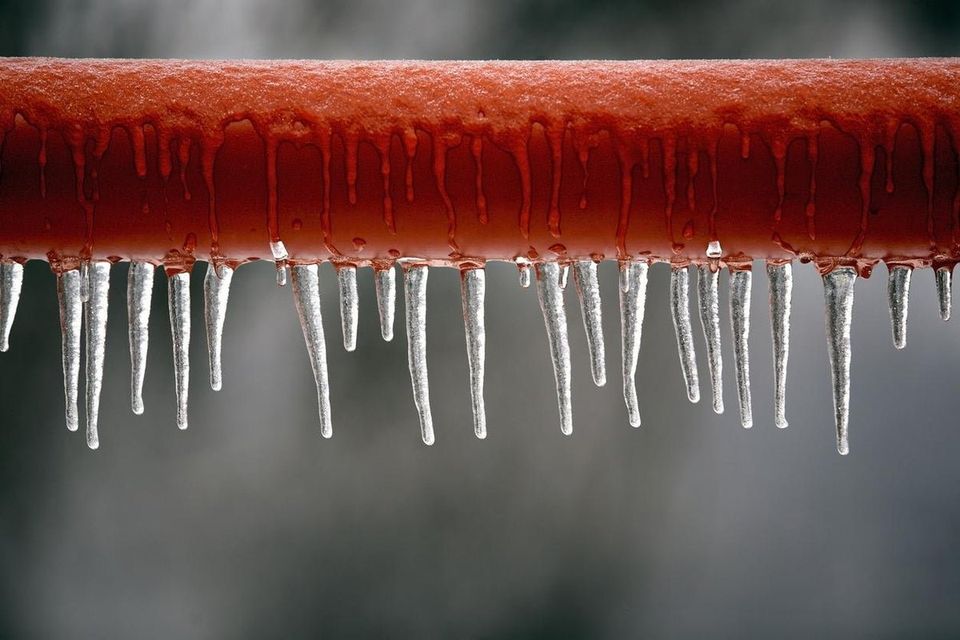Right here on the next paragraphs you can find more good quality information and facts in relation to 6 Ways to Prevent Frozen Pipes.

Winter can wreak havoc on your plumbing, especially by freezing pipelines. Below's how to prevent it from occurring and what to do if it does.
Introduction
As temperature levels decrease, the threat of icy pipelines rises, possibly bring about costly repair work and water damage. Recognizing just how to stop icy pipelines is important for homeowners in chilly environments.
Prevention Tips
Protecting at risk pipelines
Cover pipelines in insulation sleeves or use warmth tape to protect them from freezing temperatures. Concentrate on pipelines in unheated or external locations of the home.
Home heating techniques
Maintain indoor areas appropriately heated up, specifically locations with plumbing. Open up closet doors to enable warm air to flow around pipelines under sinks.
Exactly how to identify icy pipes
Try to find decreased water flow from taps, uncommon odors or noises from pipelines, and noticeable frost on exposed pipes.
Long-Term Solutions
Architectural changes
Consider rerouting pipes away from exterior wall surfaces or unheated locations. Include added insulation to attic rooms, basements, and crawl spaces.
Upgrading insulation
Invest in premium insulation for pipelines, attics, and walls. Appropriate insulation assists maintain consistent temperatures and reduces the risk of icy pipelines.
Securing Exterior Plumbing
Garden hoses and exterior taps
Detach and drain yard pipes before winter season. Set up frost-proof faucets or cover outdoor faucets with insulated caps.
Comprehending Icy Pipes
What triggers pipelines to freeze?
Pipes freeze when revealed to temperatures below 32 ° F (0 ° C) for extended durations. As water inside the pipes freezes, it expands, taxing the pipeline wall surfaces and possibly causing them to burst.
Threats and damages
Icy pipes can result in supply of water disruptions, residential or commercial property damages, and costly repair work. Burst pipelines can flooding homes and cause substantial structural damages.
Indicators of Frozen Pipes
Determining icy pipelines early can avoid them from rupturing.
What to Do If Your Pipelines Freeze
Immediate activities to take
If you believe icy pipes, keep faucets available to soothe pressure as the ice thaws. Make use of a hairdryer or towels taken in warm water to thaw pipes slowly.
Conclusion
Avoiding frozen pipes requires aggressive procedures and quick reactions. By understanding the reasons, indications, and preventive measures, homeowners can secure their pipes throughout winter.
5 Ways to Prevent Frozen Pipes
Drain Outdoor Faucets and Disconnect Hoses
First, close the shut-off valve that controls the flow of water in the pipe to your outdoor faucet. Then, head outside to disconnect and drain your hose and open the outdoor faucet to allow the water to completely drain out of the line. Turn off the faucet when done. Finally, head back to the shut-off valve and drain the remaining water inside the pipe into a bucket or container. Additionally, if you have a home irrigation system, you should consider hiring an expert to clear the system of water each year.
Insulate Pipes
One of the best and most cost-effective methods for preventing frozen water pipes is to wrap your pipes with insulation. This is especially important for areas in your home that aren’t exposed to heat, such as an attic. We suggest using foam sleeves, which can typically be found at your local hardware store.
Keep Heat Running at 65
Your pipes are located inside your walls, and the temperature there is much colder than the rest of the house. To prevent your pipes from freezing, The Insurance Information Institute suggests that you keep your home heated to at least 65 degrees, even when traveling. You may want to invest in smart devices that can keep an eye on the temperature in your home while you’re away.
Leave Water Dripping
Moving water — even a small trickle — can prevent ice from forming inside your pipes. When freezing temps are imminent, start a drip of water from all faucets that serve exposed pipes. Leaving a few faucets running will also help relieve pressure inside the pipes and help prevent a rupture if the water inside freezes.
Open Cupboard Doors
Warm your kitchen and bathroom pipes by opening cupboards and vanities. You should also leave your interior doors ajar to help warm air circulate evenly throughout your home.

I found that post on How To Avoid Freezing Pipes while looking around the search engines. Are you aware of somebody who is fascinated about the niche? Why not share it. Thanks for taking the time to read it.
Click